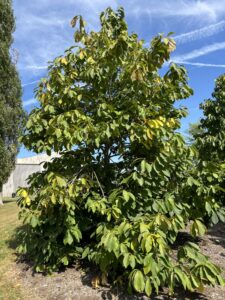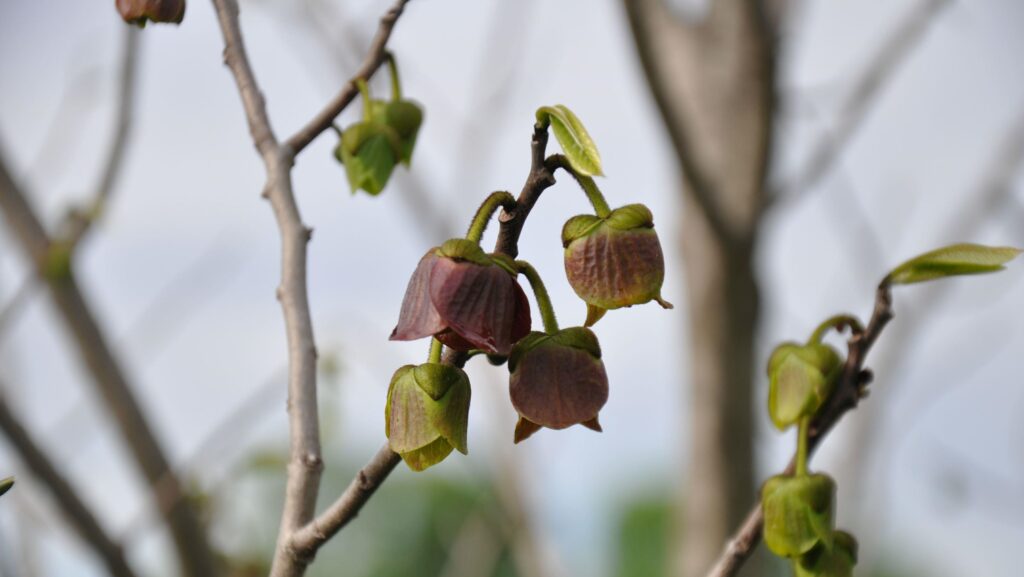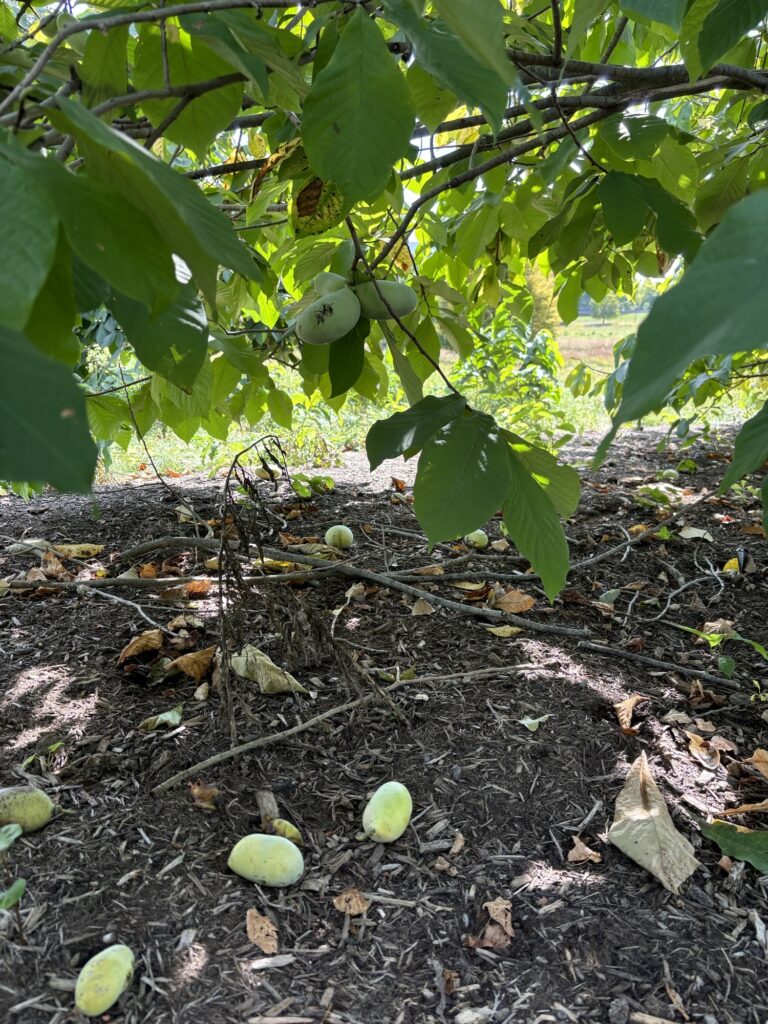
Come to the Arboretum to learn about, and maybe even sample, an early fall treat in the form of a pawpaw! The pawpaw (Asimina triloba) is a small, understory deciduous tree in the Annonaceae, or custard apple, family that is native to Pennsylvania. Plants in this family generally grow in the tropics, however, the pawpaw is the only member that can be found growing in the temperate regions of North America (hardy in USDA zones 5–9), even forming colonies as far north as southern Ontario, Canada.

There are 31 individual specimens that can be found at the Arboretum in the Pollinator and Bird Garden, Marsh Meadow, and the Childhood’s Gate Children’s Garden. You can search for their locations using the Arboretum Explorer Tool. Pawpaw can grow 10 to 30 feet tall and are tolerant to wet soils, allowing them to thrive in typical Pennsylvania weather. They prefer full-sun conditions and adequate spacing for higher productivity, although they will tolerate some shade.
The plant received the name pawpaw from a Portuguese explorer who witnessed indigenous peoples consuming the fruit. The fruit looked to have resemble a papaya and they began to call it paw paw. The “min” in the genus Asimina derives from the Algonquin word for “fruit.” Pawpaw flowers have both male and female reproductive parts, however, they are not self-pollinating and require cross pollination from another unrelated pawpaw tree. The pawpaw flowers are actually pollinated by flies and beetles, not bees. Thus, fruit production can be variable from year to year, making them a tough crop to grow commercially. It is possible, however, to hand pollinate with a paint brush to transfer the pollen to the stigma. Some pawpaw growers even hang roadkill near their trees to attract flies in order to increase the chance of fruit set!

These trees are especially unique because they produce the largest edible fruit native to North America. After their cup-shaped, maroon-purple flowers bloom in the spring, they’ll produce oblong, light-green fruits that start to ripen in late summer but peak in early fall (September to early October), depending on the season. These fruits look like small green potatoes, weighing around 6 to 12 ounces, but they are fleshy, sweet, and highly fragrant (you can smell them well before approaching a tree when ripe)! Their flavor is typically compared to the flavor of banana with hints of mango, pineapple, vanilla, and citrus. Flesh is yellow and seeds are large but easily removed. Fruits are best consumed within a few days of harvesting and are ripe when the thin skin turns from green to yellow-brown-green and when they are soft to the touch when gently squeezed. Please be mindful when handling or trying pawpaw for the first time though, as some people may experience digestive or skin irritation.

The pawpaw fruit has been used in various ways throughout history. Early Americans used the fruit pulp to make a yellow dye. The inner bark has also been used for string/rope while splints were utilized for basketry, and the stem and leaves have been used for medicinal purposes. The fruit itself can be eaten raw or used to make pies, custards, and other desserts (ice cream seems to be a favorite locally). People aren’t the only ones who love them, though. Raccoons, squirrels, birds, and other wildlife enjoy these fruits too, so one has to be quick to harvest.

